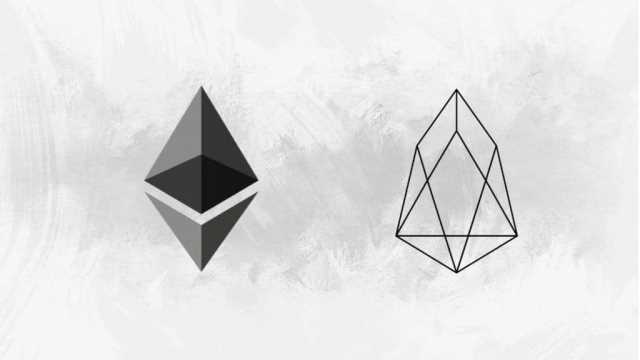Posts in Category: Cryptocurrency exchange
TomoChain Price Today TOMO to US dollar Live Crypto

We’ll also cover the roles and functions of the TomoChain Masternode network too. Finally, we’ll look at the TomoChain roadmap, and what lays ahead for the project. When the selected master nodes are rewarded for each verified block, users who have voted for this node also receive rewards. Naturally, the users who have voted for the nodes outside of the top 150 do not get any rewards.
- Blockchain mining is the computational work that network nodes undertake to validate the information contained in blocks.
- Like anything that involves money, Bitcoin and Bitcoin mining attract people who will try to trick you out of your money.
- The best tokens we review are the ones that have a forced use case – you must have this token to play in some game that you will probably desire to play in.
- Authorized Developer of Apache SoftwareFoundation, Cloud Native Computing Foundation.
- Once sharding is achieved the development team claims TomoChain can reach 20,000 to 30,000 transactions per second.
TomoChain Masternodes
Nonce is short for “number only used once,” and it is the key to generating these 64-bit hexadecimal numbers. This counter comes from the coinbase transaction field, which is much larger—it is called the extra nonce. Using the nonce and the extra nonce as counters gives the blockchain the ability to generate an astronomical number of attempts.
How Long Does It Take to Mine 1 Bitcoin?
TomoChain is one of the few chosen blockchains to already be adopted by enterprises. The blockchain offers near-instant transaction finality with minimal fees. Moreover, the breadth of decentralized applications (dApps) available alongside the easy-to-navigate what is tomocoin development tools, gives TomoChain high utility and functionality. This makes it easy for developers to deploy any Etherum-based smart contract-based decentralized application (dApp) with near-instant finality and transaction fees.
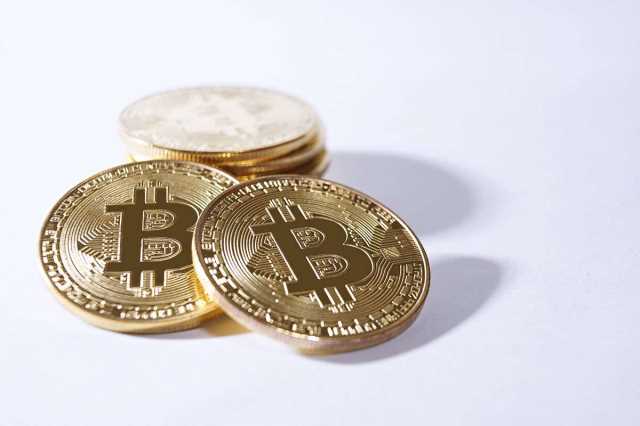
Best Crypto Wallets: Top Picks for 2024
Token distribution refers to how tokens are allocated and when they are to be dispersed to traders and stakeholders. This factor can significantly influence the stability and decentralisation of a cryptocurrency. A portmanteau of the words ‘token’ and ‘economics’, tokenomics refers to the study and design of the economic systems surrounding a cryptocurrency. It involves understanding how tokens are distributed and utilised, and how they can potentially increase in value.
- If the speed and efficiency gains anticipated by Ethereum are realized, many projects whose livelihood hinges on being faster and cheaper than Ethereum may be challenged.
- Tomochain itself will act as a sidechain, via atomic cross-chain transfer, hosting all financial transactions that occur on Tomochain apps and facilitating interoperability between the two.
- This can be done by reading the white paper on the company’s official website.
- It provides both historical and real-time data along with key insights about the system performance of the TomoChain product range.
- Le Ho, Co-founder & CFO – Ms. Ho is a CFA charterholderwith 10+ years of experience in investment and finance.

BonkSwap is a decentralized exchange platform that allows users to trade memecoins and other tokens within the Bonk ecosystem, including Bonk, Solana and stablecoins, whose value is pegged to a real-world currency. Burning is a popular way to help induce deflation in cryptocurrency, and it helps maintain traders’ confidence that the market will not be oversaturated with coins. The second-largest crypto, Ethereum, made a similar move in 2021, when it began burning transaction fees on its network. Bitcoin mining serves the crucial function of validating and confirming new transactions on the Bitcoin blockchain. It is possible to mine on various hardware and machines, but to achieve profitability and to be competitive, you’ll need to join a mining pool. Bitcoin mining can be profitable if you contribute enough hashing power to a mining pool to receive larger rewards.

What is Bonk coin?
In order to help smaller-scale miners compete, some groups have formed, known as mining pools. These arrangements allow users to join up their computing power and then share any rewards they take home, minus a fee. The team have highlighted Tomocoin’s integration with Tomoapp as a strategy for adding immediate value to the project.
- Bitcoin mining typically uses powerful, single-purpose computers that can cost hundreds or thousands dollars.
- When assessing a crypto asset, it’s essential for you to do your research and due diligence to make the best possible judgement, as any purchases shall be your sole responsibility.
- Additionally, the team is advised by experts such as WillisWee, Founder and CEO of Tech in Asia, Roger Lim, General Partner at NEO GlobalCapital, and Thuc Vu, CEO and co-founder of Kambria and OhmniLabs.
- TomoChain is an active blockchain with a variety of development protocols available for developers to take advantage of.
- Also, TomoWallet is used to track user rewards, voting for TomoChain Masternodes, and interacting with decentralized applications (dApps) and crypto gaming platforms built on the blockchain.
Bitcoin mining is an energy-intensive process involving mining devices and software that compete to solve a cryptographic problem. The Bitcoin mining process also confirms transactions on the cryptocurrency’s network. As an incentive to participate in the process, bitcoin is rewarded to those that win the competition.
Issues With Bitcoin Mining
Designed with a focus on user experience, Viction prioritizes zero-gas transactions, speed, security, and scalability to contribute to the creation of a more secure and open world. From January 2021, the token started to confidently gain ground and reached its local peak price of $3.45 on April 10, 2021. Vuong is the project’s CEO, Ho is the CFO, Nguyen is the CTO, and Hoang acts as the Project Manager.
Arbitrage Calculator: Calculate how to guarantee a profit
For instance, in the scenario mentioned above, if the trading fee per share exceeded $0.89, it would nullify any profits. Under this set of circumstances, a trader can purchase TD shares on the TSX for $63.50 CAD and simultaneously sell the same security on the NYSE for $47.00 USD. Taking the exchange rate into consideration, the equivalent value of each share should be $64.39 CAD. Ultimately the trader yielded a profit of $0.89 per share ($64.39 – $63.50) for this transaction. With this unique strategy, the differences between exchange rates are very minimal, requiring you to convert very large amounts of money to eke out even small profits.
- For example, some arbitrage strategies include pure arbitrage, currency arbitrage, cash-and-carry arbitrage, rental arbitrage, statistical arbitrage, or convertible bond arbitrage.
- Scalping can also incorporate a form of spatial arbitrage if the scalper attempts to sell tickets bought elsewhere—or online—at the event venue itself, where demand is likely more intense and immediate.
- Scalpers take advantage of the demand and supply dynamics in the secondary market for tickets—profiting from the price discrepancies—right up to the last minute at times.
- In this article, we’ll explain what crypto arbitrage is, how it works, and why it’s become an increasingly popular investment strategy in crypto space.
- The SEC noted that hundreds of ETFs have a daily trading volume of less than one million shares per day.
What is an Arbitrage Bet?
This form of arbitrage relies on a strong correlation between two related or unrelated securities. Arbitrage, in its purest form, is defined as the purchase of securities on one market for immediate resale on another market in order to profit from a price discrepancy. You should nicehash best spot to buy and sell hashing power still look to make large wagers if you have the bankroll to do so. It should be noted that minimal max bets is a sports betting strategy that all types of bettors should embrace. In fact, arbitrage (a.k.a. arbing) gambling is one of the most common ways to earn profits.
Requires a significant investment
Forex arbitrage calculators are available to aid in this process of finding opportunities in a short window of time. Big institutions, hedge funds and professional traders may also be able to leverage what’s known as statistical arbitrage, which uses algorithms to identify temporary price mismatches in two or more related securities. Arbitrage is an investing strategy in which people aim to profit from varying prices for the same asset in different markets. Which positions the investor takes and the ratio of buys and sells depends on whether the investor believes the bond to be fairly priced.
How does online arbitrage work?
Given the transaction has some chance of not occurring, the market would price company A’s stock at closer to $95 if there was a 100% probability of the deal going through to completion. Arbitrage trading is a technique used to take advantage of differences in price in substantially identical assets across different markets or in different types of instruments. Let us consider the difference in the profitability of Bob and Sarah due to the timing of their trades. In this scenario, Bob is the first to spot and capitalize on the arbitrage opportunity from our original example.
In general, crypto arbitrage is legal in most countries, but traders should be aware of local regulations and laws governing cryptocurrencies and financial trading. Arbitrage, as guided by the principles of Adam Smith’s “invisible hand,” serves as a fundamental driver of market efficiency in various areas of our lives. By exploiting inefficiencies and correcting price disparities, arbitrageurs play a vital role in maintaining market balance, whether in the financial markets or in more unconventional areas like real estate and ticket scalping.
The term is mainly applied to trading in financial instruments, such as bonds, stocks, derivatives, commodities, and currencies. People who engage in arbitrage are called arbitrageurs (/ˌɑːrbɪtrɑːˈʒɜːr/). This is a form of liquidation arbitrage but involves a more conservative version of the strategy. If company A was trading at $100 per share, it may fall to something lower, such as $96.
Assume that a car purchased in the United States is cheaper than the same car in Canada. Canadians would buy their cars across the border to exploit the arbitrage condition. At the same time, Americans would buy US cars, transport them across the border, then sell them in Canada.
If two stocks historically have high levels of correlation, it would be expected that, unless their business models fundamentally change, this correlation would continue to hold up. Therefore, company B may price somewhat lower than the $125 takeover price, such as $120 to reflect an 80% chance of the deal closing – that is, high but not certain. Learn more about Consensus 2024, CoinDesk’s longest-running and most influential event that brings together all sides of crypto, blockchain and Web3. Find out how consumers are shopping, researching products, and responding to ads.
In this case, a forex trader could buy one mini-lot (10,000 units) of EUR for USD 11,837. Finally, the 7,231 GBP could be sold for USD 11,850 for a profit of $13 per trade. The trader has no open exposure as long positions and will cancel short positions in each currency. The same trade using normal lots (rather than mini-lots) of 100,000 would yield a profit of $130.
Usually, the most common arbitrage opportunities are from buying and selling assets like stocks, bonds, or other financial instruments, commodities through futures contracts or retail arbitrage, or currencies. What’s more, exchange rates constantly fluctuate based on supply and demand, so temporary price mismatches are common. There’s also a lot of liquidity in the currency market, meaning it’s easy to execute trades for an arbitrage strategy. Simple arbitrage involves simultaneously buying and selling one asset on two different exchanges. Unlike retail arbitrage, traders may assume very little risk because the transactions are executed at the same time. Arbitrage can be used with any asset type but occurs most commonly in liquid markets such as commodity futures, well-known stocks, or major forex pairs.
Formally, arbitrage transactions have negative skew – prices can get a small amount closer (but often no closer than 0), while they can get very far apart. The day-to-day risks are generally small because the transactions involve small differences in price, so an execution failure will generally cause a small loss (unless the trade is very big or the price moves rapidly). The rare case risks are extremely high because these small price differences are converted to large profits via leverage (borrowed money), and in the rare event of a large price move, this may yield a large loss. Arbitrage has the effect of causing prices in different markets to converge.
Pairs trading is primarily used during sideways markets as a way to profit. Granted, this is highly empirical, but it will give you an idea of what to expect before you get into a merger arbitrage situation. “I don’t throw darts at a board. I bet on sure things. Read Sun Tzu, The Art of War. Every battle is won before it is ever fought.” Many of you might recognize these words spoken by Gordon Gekko in the movie Wall Street. Unlike a traditional sportsbook, a betting exchange doesn’t act as the bookmaker. Instead, it merely serves as a platform where gamblers can take either side of a wager.
Across most popular decentralized exchanges, the prices of both assets in the pool (A and B) are maintained by a mathematical formula. Convertible arbitrage is a form of arbitrage related to convertible bonds, also called convertible notes or convertible debt. From these transactions, you would receive https://cryptolisting.org/ an arbitrage profit of $1,384 (assuming no transaction costs or taxes). The trader can continue to exploit this arbitrage until the specialists on the NYSE run out of inventory of Company X’s stock, or until the specialists on the NYSE or the LSE adjust their prices to wipe out the opportunity.
ETF prices therefore fluctuate throughout the day as traders buy and sell shares. These trades provide liquidity in ETFs and transparency in price but they also subject ETFs to intraday mispricing because the trading value can deviate, even slightly, from the underlying net asset value. For example, if we’re trading Lithium, the varying currency exchange rates can create arbitrage opportunities. As exchanges don’t have the same deposit and withdrawal times the opportunities for the crypto arbitrage grow. If we could move our fiat and crypto assets instantaneously, the market differences between several exchanges would flatten out.
The main benefit of this system is that traders don’t have to wait for a counterparty (an opposite trader) to buy or sell assets at a certain price. Decentralized crypto exchanges, however, use a different method for pricing crypto assets. Known as an “automated market maker” system, this directly relies on crypto arbitrage traders to keep prices in line with those shown across other exchanges.
Earning interest in this way is nowadays rarer, especially when both markets are aware of each other’s exchange rates and as markets try to bring any imbalances to an equal level. Another technique that requires more research, knowledgde, and understand is statistical arbitrage. It is where complex statistical models define trading opportunities among several different financial instruments with different prices and need significant computational power. The principal risk, which is typically encountered on a routine basis, is classified as execution risk.
The Latecomers Guide to Crypto The New York Times
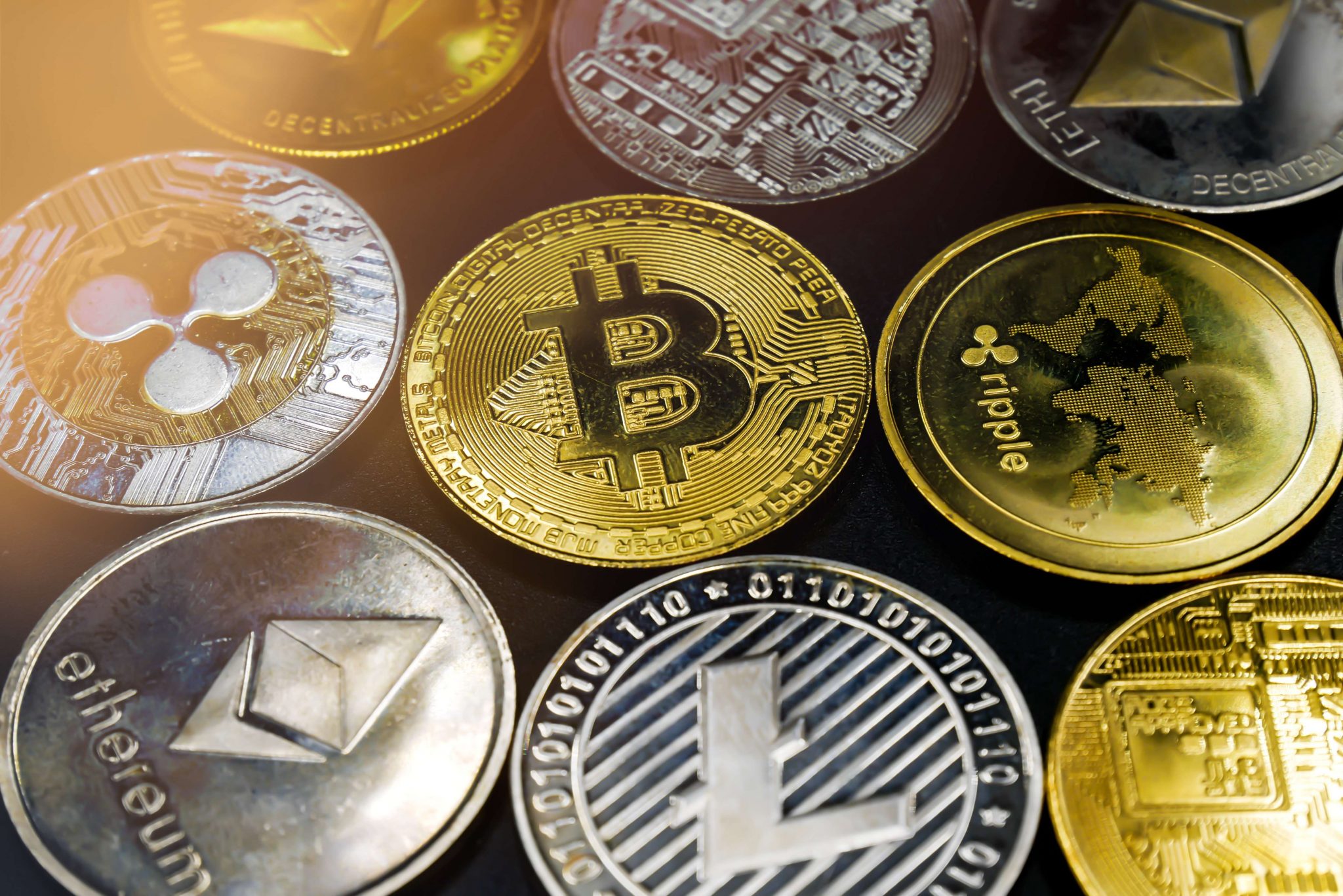
You and your gambling partner would upload the contract to the Ethereum network and then send a little digital currency, which the software would essentially hold in escrow. The next day, the software would check the weather and send the winner their earnings. A number of “prediction markets” have been built on the platform, enabling people to bet on more interesting outcomes, such as which political party will win an election.
Modeling-driven smart contract improvement
Although other cryptocurrencies, such as Ethereum, perform better than Bitcoin, blockchain still limits them. On some blockchains, transactions can be completed in minutes and considered secure after just a few. This is particularly useful for cross-border trades, which usually take much longer because of time zone issues and the fact that all parties must confirm payment processing. A new and smaller chain might be susceptible to this kind of attack, but the attacker would need at least half of the computational power of the network (called a 51% attack). By the time the hacker takes any action, the network is likely to have moved past the blocks they were trying to alter.
Blockchain smart contracts: Applications, challenges, and future trends
- Of course, the records stored in the Bitcoin blockchain (as well as most others) are encrypted.
- Thanks to the help of mathematician David Bayer, Merkle trees were incorporated into the design the following year, so that data could be consolidated into one block — similar to what we know blockchain’s functionality to be like today.
- Although existing oracles are well tested, their use may introduce a potential “point of failure”.
- Walmart Canada turned to blockchain to address payment disputes with freight carriers by automatically sending payments rather than manually reconciling invoices, and the company has since expanded its use of blockchain.
- More recently, it has become a means to trade, sell and authenticate original digital pieces of art.
We can distinguish between two state types, namely constant states, which can never be changed, and writable states, which save states in the blockchain. We can distinguish between two function types, namely read-only functions, which do not require gas Footnote 2 to run and write functions that require gas because the state transitions must be encoded in a new block of the blockchain. Furthermore, paying currency is required to avoid infinitely smart contract runs. Beyond being used for finances, blockchain technology has many other functions.
- As it’s gone mainstream, crypto has inspired an unusually polarized discourse.
- (I even made a very silly one while writing this article.) There are also companies that run their own blockchains, but we’ll get into that later.
- I could, if I wanted to, create a blockchain where each block stored the entire text of The Great Gatsby.
- Adding restricted access to an encrypted record-keeping ledger appeals to certain organizations that work with sensitive information, like large enterprises or government agencies.
1 Operational process of smart contracts

In this regard, a blockchain can offer an immutable storage of records and smart contracts can be used as a responsible for verifying the data origins before storing them. Similar ideas are applied in [6, 44], where a blockchain is used as a decentralized and immutable storage for enabling data provenance. For instance, Javaid et al. [44] have proposed a blockchain-based data provenance and integrity for secure IoT environments framework, called BlockPro. The first smart contract established data provenance by interacting with the IoT devices and making sure they are legit and the data being uploaded is coming from a known and trusted origin. The second smart contract can only be called by the first one to storing data on and retrieving data from the blockchain. Through this survey, we aspire not only to define the conceptual background of blockchain-enabled smart contracts, but also to identify research issues to be explored at new studies.
Blockchain vs. Banks

Profit-centric solutions aim at increasing the profit by reducing real-time tracking costs, improving cross-border payments, and enhancing distributed problem-solving transparency. Tables 10, 11, and 12 present some examples of profit-centric solutions concerning tracking-based solutions, digital asset-based solutions, and crowdsourcing-related solutions, respectively. The privacy issue represents a real challenge for smart contracts to keep critical functions secret, apply cryptography, and avoid disclosing data on the blockchain to the public. The lack of transactional privacy could limit the adoption of smart contracts. To address this issue, Kosba et al. [49] have proposed Hawk, a decentralized smart contract system.
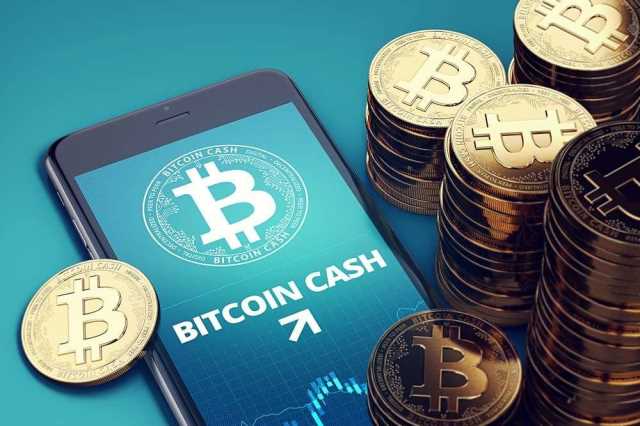
This is different from a standalone database or spreadsheet, where one person can make changes without oversight. It’s true that most crypto activity today takes place on blockchains that require large amounts of energy to store and verify transactions. Solving these puzzles crypto and blockchain articles requires powerful computers, which in turn use lots of energy. The smart contract protocol aims at making contracts more secure, executed in real-time, and more transparent, which are the exact challenges with the existing profit-centric cross-organizational collaboration.
But it wasn’t until almost two decades later, with the launch of Bitcoin in January 2009, that blockchain had its first real-world application. It’s true that most newer blockchains are designed in a way that requires considerably less energy than Bitcoin, and that Ethereum’s switch to a proof-of-stake consensus mechanism will greatly shrink its environmental footprint, if and when it happens. Crypto owners, then, have a rational incentive to convince other people to buy.
- Many in the crypto space have expressed concerns about government regulation of cryptocurrencies.
- But one U.S. investor, who spoke with Fortune on the condition of anonymity, said they only received a partial refund.
- In this context, several studies using blockchain-enabled smart contracts [38, 87, 97, 119] have been proposed, as shown in Table 12.
- Similar ideas are applied in [6, 44], where a blockchain is used as a decentralized and immutable storage for enabling data provenance.
- Blockchain also facilitates secure sharing of medical data between healthcare providers, patients and researchers, and is even being recruited by genome-sequencing startups to help crack the genetic code.
Section 4 describes the adopted survey methodology and the solution taxonomy used to categorize existing smart contract-based solutions. In Sections 5–8, we present existing advances in modeling-driven smart contract improvement, optimization-driven smart contract improvement, resource-driven smart contract usage, and cross-organizational collaboration-driven smart contract usage. Section 9 discusses the study results by introducing challenges and future trends in the studied field. The original blockchain is the decentralized ledger behind the digital currency bitcoin.
Beginner’s Guide: What is ByteBall? The First Dag Platform
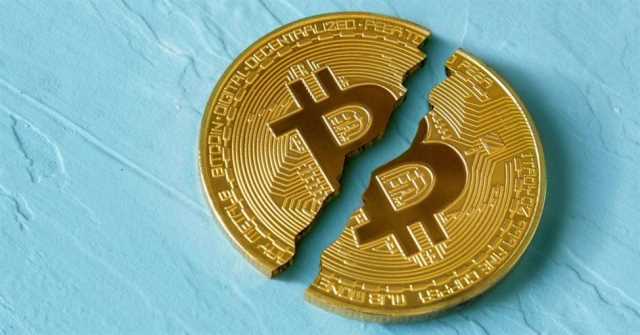
Further enhancing its ecosystem, Obyte launched a public decentralized data cloud portal, integrating this with the product suite of QORPO. This development underscores Obyte’s commitment to decentralization and data storage, providing a secure and efficient means for data handling within the crypto space. The platform’s security is also enhanced through its connections with other popular networks via decentralized cross-chain bridges, such as Counterstake. This allows for secure and decentralized interoperability with other blockchain ecosystems, further extending the utility and security of Obyte. These kind of projects bring great value and we want to make sure that we’ll be able to technologically advance the project and acquire new users for a long time to come. In essence this is also a distribution method and we think it makes sense to dedicate a sizeable percentage of the undistributed funds to it.
- Meanwhile the community to build on and around Byteball didn’t really take off as fast as we thought it might.
- You can also use the P2P smart contract to bet on the movement of a particular price.
- As you all know we still hold ~32% of Bytes in the undistributed funds.
- These Blackbytes can be sent between two different parties who are communicating via encrypted messaging.
- Highlighted by its versatile conditional payments, Byteball offers a smart contract creation system that is simple enough to be utilized by almost any user.
What is ByteBall? The Cryptocurrency With No Blockchain
It is also a strategic tool for directing development into areas where we see the best opportunities, like for example IoT, gaming, AI or big data. This has a number of benefits over Bitcoin as all transactions on the Bitcoin network are stored on the blockchain and can be traced. This is one of the reasons that so many users are moving to privacy concious coins. ByteBall also has another built-in cryptocurrency that is designed specifically for anonymity.
Sending payments directly to email addresses
Each tool is carefully developed and rigorously tested, and our content is well-sourced, but despite our best effort it is possible they contain errors. We are not to be held responsible for any resulting damages from proper or improper use of the service. They helped us structure our discussion and their creative team came up with more https://www.tokenexus.com/ than a 100 new candidate names. Not to just have a big pool of names to choose from, we had plenty of names ourselves, but to select strategic and creative routes to develop. It is a big effort, but one that is absolutely, positively, worth it. The table above shows the number of days which Obyte closed above a certain price level.
Free Distribution
It would allow ByteBall to easily be used as for these types of institutions. In order to reduce transaction spam on the network, ByteBall makes use of transaction “Witnesses” who will charge a fee of 1 byte per byte of data that is stored on the DAG. In the case of the Bitcoin blockchain, all of the blocks are linked in one long chain since the beginning of the genesis Bitcoin block.

What key events have there been for Obyte?
A small number of them control most block production and can collude to (or be coerced to) censor certain transactions. Obyte makes another leap forward by getting rid of those big power centers and middlemen. DAG stands for Directed Acyclic Graph — it’s a technology that makes Obyte byteball bytes fully decentralized, free of domination, free of censorship, and accessible to all. Blackbytes uses secured transactions improving the privacy of the transactions. Johnny Sessa is a blockchain investor with a dual-concentration MBA specializing in Finance and Mergers & Acquisitions.
bit to Byte Conversion Example
The most exciting thing about DAG is that each ball consists of hashes of previous storage balls. This enables the system to attach a new storage ball by signing the previous transactions hashes to the new one. With a background in anthropology, Zoë is especially fascinated by how this groundbreaking technology is affecting societies around the world. The amounts you receive are proportional to your proven balances in BTC and Bytes on the distribution date. To prove your balances, install the wallet and chat with the Transition Bot (you will find it in the Bot Store in the wallet). The bot will help you link your Bitcoin and Byteball addresses by making a micropayment or signing a message.
Meet BlackBytes: A currency for less traceable transactions
It makes use of a revolutionary new technology called a Directed Acylic Graph or “DAG”. Many people have considered this a great way to overcome blockchain growing pains. The Obyte team has built a number of truly unique, first-of-a-kind apps and features, mostly in the DeFi space.
The platform claims to be the first DAG-based system to offer this capability. Developers can create dApps in Oscript, a programming language designed by Obyte to avoid unsafe patterns found in earlier dApp platforms. Perhaps Byteball’s most innovative feature, conditional bound payments allows users to set a smart contract condition that must occur for the payee to receive bound money. If the payee doesn’t keep his or her promise (or outside data doesn’t meet the stated contract conditional criteria), you can safely take your money back after the designated waiting period. Although the platform offers immutable storage for any data type, it’s most noteworthy feature is its versatile conditional payment system.
